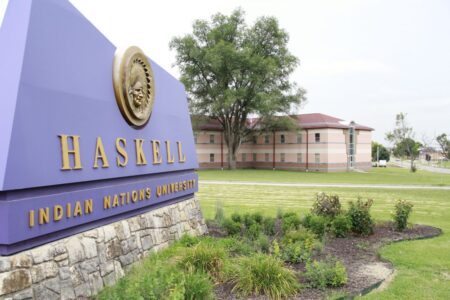Ham radio operators to practice their emergency communication skills at annual field day

photo by: Kevin Anderson
A ham radio setup is pictured at Learned Hall on the KU campus as part of a national ham radio field day, June 26, 2010.
Local amateur radio operators will be setting up temporary transmitting stations just outside of Lawrence over the weekend for an annual event geared toward using radios in times of disaster.
For 24 hours, between 1 p.m. Saturday and 1 p.m. Sunday, the Douglas County Amateur Radio Club’s operators, or “hams,” will have their radios set up at Wells Overlook Park, located 3/4 of a mile east of U.S. Highway 59 on the south side of North 1000 Road. Club member Dave Klamet, of Lawrence, told the Journal-World by phone that the idea is to operate the radios without using the local electrical grid or infrastructure — things that might not be available in the event of a disaster.
“We will use wires strung from trees, portable antennas mounted in the highest spot we can find, or construct an antenna which allows us to get on the air,” Klamet said. “The idea is to practice for an emergency situation.”
Had the EF-4 tornado that struck Douglas County on May 28 cut off all communication, Klamet said, ham radio operators would have been able to step up and help with disaster relief efforts by using portable antennas so that people could communicate.
“Anytime communications have been taken down and messages need to get from one (place) to another, there is a network of hams all over the country who can get the messages where they need to go,” Klamet said.
Every year since 1933, the American Radio Relay League, an organization of noncommercial radio amateurs, has hosted a field day to practice those types of communications. For this weekend’s event, more than 40,000 ham operators across North America are expected to set up temporary transmitting stations to demonstrate the ham radio science and what can be accomplished to assist the public, according to the ARRL website.
“We’ll be making contacts with other hams around the country and the world,” Klamet said
The field day isn’t just about practicing for an emergency, however — Klamet said it’s also an informal contest to see how many other ham operators you can reach in the 24-hour period.
“It’s a big thing to see how far you can talk with as little power,” Klamet said.
Klamet has worked in the commercial broadband radio field, but he said he only got involved in amateur radio three years ago. As a kid, he remembers his uncle was a ham radio operator and had a tall tower and a rotating antenna in his backyard. His uncle died in 1968, and when Klamet became licensed, his cousin suggested he take his uncle’s call number, W0FEY.
Visitors are welcome throughout the 24-hour field day, Klamet said.
“We’ll have a station set up and people can come and talk on a radio,” Klamet said. Club members will also be explaining many of the hobby aspects of ham radios.
While Klamet had a background in radio technology before he became a ham operator, he says amateur radio is for people from all walks of life.
“Not all have chosen to acquire deep, technical knowledge,” Klamet said. “They learn what they need to enjoy the various aspects of the hobby that interest them and pursue it to match their level of interest.”







COMMENTS